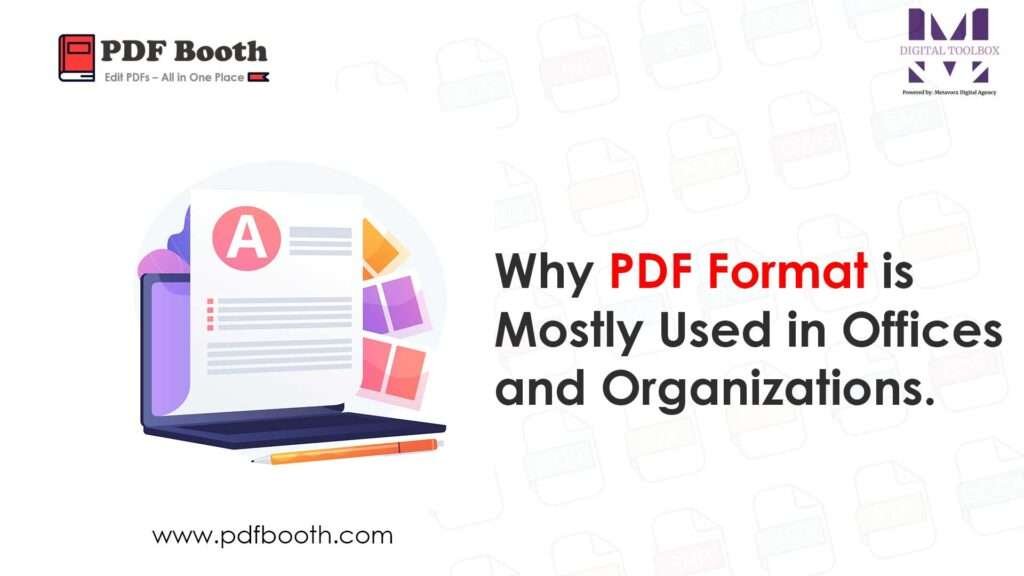Why PDF Format is Mostly Used in Offices and Organizations

In today’s fast-paced business world, digital documentation has become the backbone of office operations. Among the many file formats available, the PDF (Portable Document Format) stands out as the most widely used in offices and organizations across the globe. Whether it’s contracts, reports, invoices, or presentations, PDFs remain the go-to choice for professionals. But why is this format so popular? Let’s explore the reasons.
1. Universal Compatibility
One of the biggest strengths of PDFs is that they can be opened on almost any device or operating system without altering their layout. Whether you are using Windows, macOS, Linux, or a smartphone, a PDF will look exactly the same everywhere. This makes it perfect for sharing important business documents across different platforms.
2. Professional Presentation
PDFs preserve the formatting, fonts, and layout of a document. Unlike Word files or spreadsheets that may change appearance when opened in different software versions, a PDF ensures your document looks polished and professional every time.
3. Security Features
In offices, security of documents is critical. PDFs can be password-protected, encrypted, and watermarked, making them more secure than other file formats. This is especially useful for legal documents, financial reports, or confidential company data.
4. Easy to Share and Compact
PDF files are smaller in size compared to raw Word or image files. With compression, they can be shared quickly over email or stored without taking up much space. This helps organizations save both storage and bandwidth.
5. Supports Digital Signatures
One major reason offices prefer PDFs is their ability to support digital signatures. Instead of printing, signing, and scanning documents, professionals can securely sign a PDF electronically. This makes workflows faster, paperless, and eco-friendly.
6. Compatibility with Scanners and Printers
Most modern scanners and printers are designed to generate or read PDFs directly. This smooth integration makes the format highly convenient for day-to-day office tasks.
7. Long-Term Reliability
Since its introduction by Adobe in the 1990s, the PDF format has been recognized as a standard for archiving. Many government bodies and organizations use PDFs for long-term storage because the format is stable and unlikely to become obsolete.
Final Thoughts
The PDF format has become the backbone of office communication and documentation. With its universal compatibility, security, professional look, and efficiency, it’s no surprise that organizations across industries rely heavily on it.
If you want to create, edit, or manage your PDF files with ease, tools like PDF Booth
FAQs:
What is a PDF file and why is it preferred in offices?
A PDF (Portable Document Format) is a file format that preserves the layout, fonts, and design of a document across all devices. It is preferred in offices because it ensures professional presentation, security, and universal compatibility.
Can PDFs be edited after creation?
Yes, PDFs can be edited using specialized tools like PDF Booth. You can modify text, images, add annotations, merge files, or even convert PDFs to other formats while maintaining document integrity.
How secure are PDF files for confidential documents?
PDFs can be highly secure. They allow password protection, encryption, and digital signatures, making them ideal for confidential office documents like contracts, reports, and financial statements.
Why are PDFs better than Word or Excel files for sharing?
Unlike Word or Excel files, PDFs preserve the exact formatting regardless of the device or software used. They are also compact in size, easy to share, and compatible with most scanners and printers, making them ideal for office workflows.
